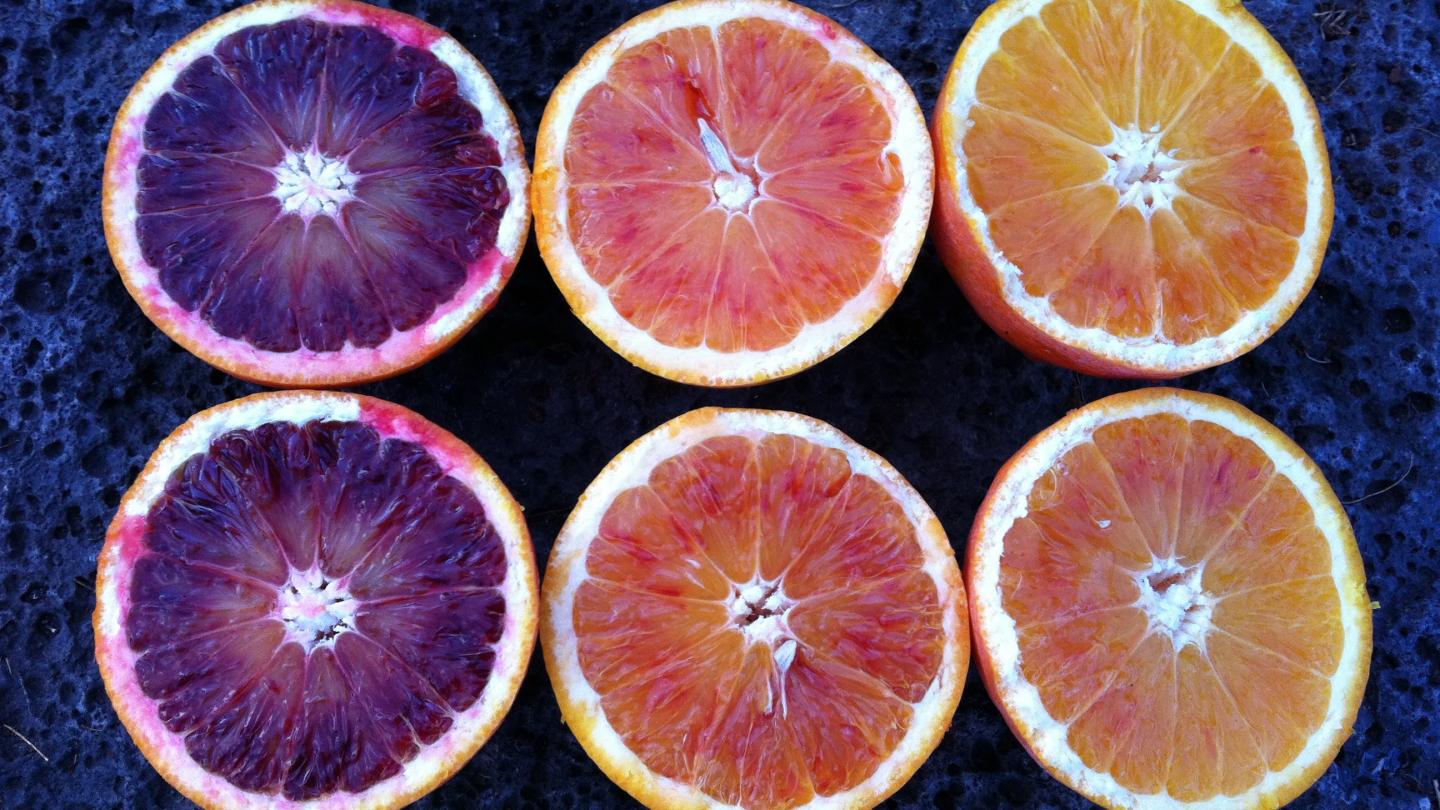
Welcome to a new episode of our series on success stories.
Today, we are speaking with Dr. Corrado Vigo, a Sicilian agronomist, about the bud mutation that led to the creation of Tarocco Vigo—a discovery born from fortunate coincidences, curiosity, and professionalism.
Dr. Vigo, can you tell us about the discovery and development process of the bud mutation that resulted in Tarocco Vigo?
The discovery of the Tarocco Vigo bud mutation happened by chance while I was walking through citrus groves in Francofonte, in the province of Siracusa—one of the areas where Tarocco oranges show their best organoleptic properties. After noticing this unique mutation on a branch in 2007, I spent two years verifying that the observed characteristics were consistently replicated. Once confirmed, I collected the plant material and grafted it onto bitter orange rootstock. Three years later, the first production confirmed the traits found in the initial discovery. Over the following years, these characteristics remained stable, and I decided it was time to proceed with plant sanitation to eliminate any viruses or viroids present.
In 2013, I contacted the Faculty of Agriculture at the University of Catania, specifically the Institute of Arboriculture, to request plant sanitation. After several checks and verifications, in June 2022, the Faculty delivered three sanitized Tarocco Vigo plants and a nucellar selection of Tarocco Vigo. Thanks to Messina Nurseries and Crisafulli Nurseries, we were able to produce mother plants for pre-multiplication and multiplication, enabling the marketing of sanitized Tarocco Vigo plants.
What are the distinctive features of this variety compared to others on the market?
The most distinctive features of this variety include its deep red pigmentation, which begins at the end of November and turns violet between mid and late December. Unlike the Moro orange, the flavor does not decline as the color deepens. Instead, blackberry and raspberry notes are added to the classic orange taste, thanks to the anthocyanin content.
For two consecutive years, I sent fruit samples to CREA Acireale for organoleptic analysis. It was confirmed that, compared to other Tarocco varieties, the anthocyanin content in Tarocco Vigo is exceptionally high, even in years with reduced temperature fluctuations, when other Tarocco oranges struggled to develop color. Field tests also showed that the fruit remains on the tree until the end of March.

What challenges did you encounter during the process of registering and protecting the plant variety rights with the CPVO?
The process of registering and protecting plant variety rights was relatively smooth, though the inspections at IVIA were lengthy. However, this was due not to the control authority but to the growth characteristics of citrus trees and the thoroughness of the checks, which must last several years. I personally handled the registration and submission of the application.
How did the support of authorized nurseries contribute to the pre-multiplication and multiplication of the plant material?
The support of authorized nurseries was invaluable. They have the expertise needed for pre-multiplication and multiplication of the plant material. The two nurseries I worked with had previously observed the fruit, as I had shared samples with them on multiple occasions, and they eagerly agreed to collaborate.
What prospects do you see for the future of this variety’s cultivation, both in Italy and across Europe?
In our region, this new variety can extend the marketing period of Tarocco oranges by at least a month. Areas with early ripening, enhanced by pedoclimatic conditions or microclimate, can benefit from growing a Tarocco variety that pigments very early. In recent years, I tested this Tarocco in parts of the southern province of Siracusa, where it traditionally proves difficult to pigment Tarocco oranges, and yet this variety developed color even with minimal temperature fluctuations.
This new variety could, therefore, expand the potential for Tarocco orange cultivation not only in Sicily but across other Italian regions. In certain European areas, like Spain, it could promote the cultivation of highly pigmented Tarocco oranges. Other parts of the world, such as South Africa, Australia, or New Zealand, where similar thermal conditions exist, may also benefit from this variety.
